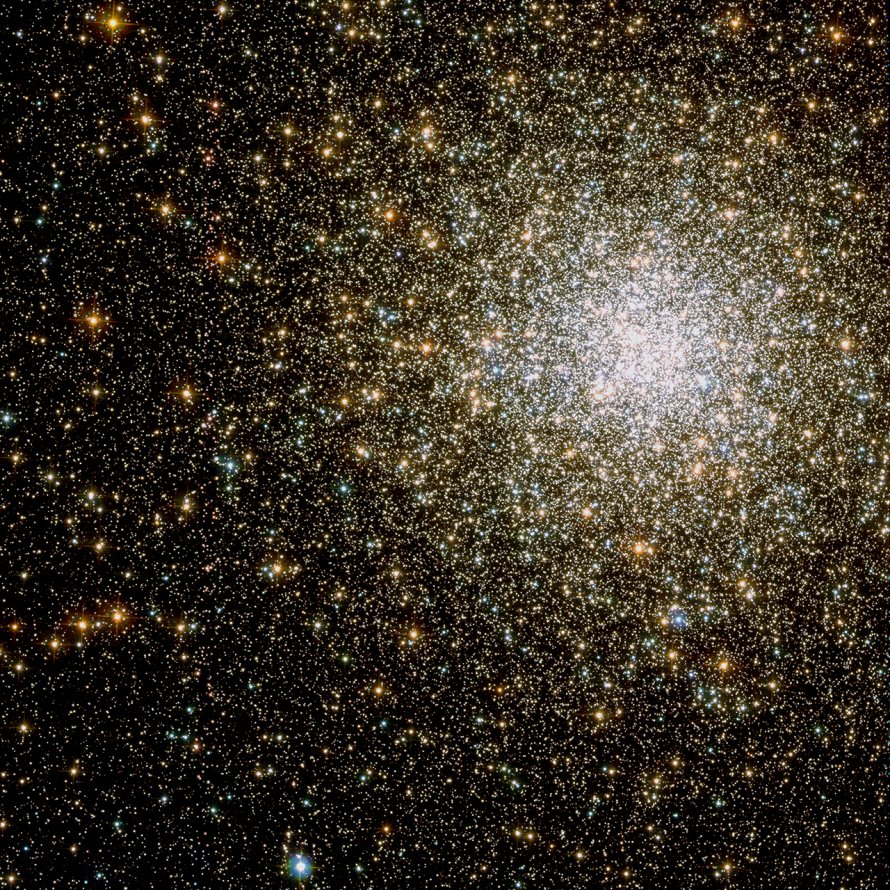M62 (NGC 6266)
Messier 62 (NGC 6266) is a globular cluster located in the constellation Ophiucus, in the Galactic Center of the Milky Way Galaxy in the Local Group of galaxies. M62 is 22200 light years away from Earth.
M62 is best viewed during mid-summer, is magnitude 6.5, and can be viewed with binoculars. M62 is 15' in apparent size. For reference, the full moon is 30'.
Observing difficulty: Hard
- Name:
- Type:
- globular cluster
- Constellation:
- Ophiucus
- NGC or IC:
- NGC 6266
- Magnitude:
- 6.5
- Viewing:
- binoculars
- Size:
- 15'
- Distance (light years):
- 22200 LY
- RA:
- 17h 1.2m
- Dec:
- -30 7'
- Season:
- mid-summer
- Milky Way location:
- Galactic Center
- Galaxy group:
- Local Group
- Messier Marathon #:
- 85
* The naked eye can see up to magnitude ~7-8 objects under ideal dark sky conditions.
A Spectacular Globular Cluster in Ophiuchus
Messier 62 (M62) is a stunning globular cluster found in the constellation Ophiuchus. Famed for its irregular shape and abundance of variable stars, it presents an engaging observation target for astronomers of all levels.
Historical Overview
M62 was discovered by French astronomer Charles Messier on June 7, 1771. As part of Messier's catalog of "nebulous" objects, its primary intent was to help comet hunters avoid mistaking these static objects for the moving comets. In Messier's own words, M62 was a "nebula without stars," but later advancements in telescope technology revealed it to be a rich globular cluster.
Physical Characteristics
M62 is an intriguing object due to its distorted shape. Unlike most globular clusters that possess a symmetrical, spherical form, M62 exhibits an elongated shape, with its core displaced from the center. This unique appearance might result from gravitational tidal forces exerted by the Milky Way's core, which the cluster is relatively close to in cosmic terms.
Magnitude and Size
With an apparent magnitude of about 6.5, M62 is on the threshold of naked-eye visibility under ideal dark sky conditions. However, even a small telescope or a pair of binoculars will easily reveal it as a hazy, luminous patch. The cluster spans around 15 arc minutes in the sky, equivalent to half the diameter of the full Moon.
Scientific Significance
M62 is a robust object of study for astronomers because it hosts a high population of variable stars, with 89 identified so far. Additionally, it contains several X-ray sources, most of them thought to be binary star systems in close orbits. It's also among the densest globular clusters, with a large number of stars in its core, providing a fantastic laboratory to study stellar interactions in such environments.
Finding and Viewing Messier 62
To locate M62, one needs to focus on the constellation Ophiuchus, lying near the celestial equator. The cluster is around 6 degrees to the west of the star Eta Ophiuchi and can be spotted as a faint, hazy patch in the sky with binoculars or a small telescope. However, larger telescopes will offer a more satisfying view, potentially resolving some of its outer stars.
M62 is best observed during the summer months when Ophiuchus is high in the sky for observers in the Northern Hemisphere. As with all deep-sky objects, darker, rural skies away from city lights will provide the best conditions for viewing M62.



